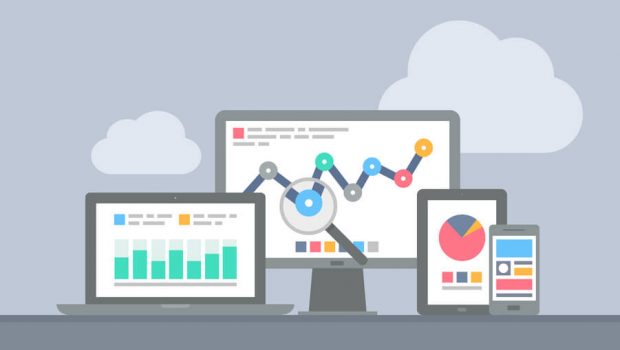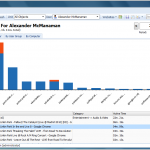5 Steps To A Successful Business Analytics Implementation
Analytics and Business intelligence have become highly popular with companies these days. Before you implement your business analytics, however, you might want to know how much will it cost. In the U.S., the high demand for data analytics professionals has bid up the median business analytics salary to $122,991.
Before your strategy can come to fruition, you must carefully weigh hiring costs against the return on investment. Business Analytics requires professionals with highly specialized skills such as Hadoop, Python, R and SQL. Experience with business intelligence tools like Tableau, Qlikview and Domo is often desirable. The talent you need might be highly in demand by other companies.
The good news is that the benefits of a business analytics implementation can return multiple the initial investment.
Why Is Business Analytics Now So Popular?
The prevalence of data analyst jobs is indicative of the high-value organizations are deriving from the business analysis.
Huffington’s Data-Driven Operation Rises To The Top In News
For example, the implementation of business analytics at Huffington Post helped the company become the most visited news site in the United States. According to the Big Data for Media report, Huffington Post uses data analytics to determine which stories to target its audiences. Headlines are selected through A/B testing, and publishing times are based on data around readers’ reading habits. The Huffington Post used conjoint variation to decide in favor of eliminating anonymous commenting. As a result, this improved the quality of conversation on the media company’s website.
Business Intelligence Vs Statistical Analytics
Organizations typically break their analytics implementations into two camps: business intelligence and statistical analytics (also called advanced data analytics).
Of these two, business intelligence deals with using historical data to track the performance of a particular commercial unit over time.
With statistical analysis, more advanced techniques are possible. For instance, predictive analytics can be applied as part of a marketing study to predict sales for a new product. This can lead to appropriate budgets and efforts being assigned to make the product a success in the market.
In one application in the retail industry, as McKinsey reports, retailers use predictive analytics to determine which products to stock. The data they collect on consumers’ shopping behaviors can lead to better matches with what shoppers want and when to time promotions.
Benefits Of Business Intelligence And Predictive Analytics
Both forms of business analytics can offer significant advantages to the organization, including:
- Qualitatively better decisions are made
- Save costs by determining optimum spend e.g. on marketing costs
- Determine timing of intervention efforts
- Track performance of teams based on statistics rather than personal opinion
- Determine the best opportunities for new investment
Business analytics can be applied to improve performance and make decisions that drive the company forward across business functions. This is because these techniques work for
- Marketing
- Operations
- Manufacturing
- Finance
- Human Resources
And other departments where data analytics may be applied to solve problems.
How To Implement Business Analytics In Your Organization
Before you go about the actual implementation, prepare your analytics team for the task. You will need at minimum a business analyst to define business problems as well as a data engineer to implement the data collection. Additionally, a data scientist or machine learning expert can help you process the data to extract actionable insights.
These are the steps you will need to follow when implementing your business analytics strategy.
Step 1: Define Your Problem In Ways That Can Be Quantified
State your problem in a quantitative format. This is where the business analyst, with intimate knowledge of the business and its operations, proves particularly valuable. They can help the team identify key metrics that can be used to compare scenarios and results.
A problem statement in quantitative terms could be, for example:
How much will opening on weekends increase sales for our biggest retail shop?
Depending on your goals, you may have multiple scenarios or multiple problem statements.
Step 2: Build The Capability To Collect Data
Before you go about collecting the data that can answer your questions, you have to build the capability to collect data. For example, you might need to install systems to enable you to collect sales data from all your current restaurant locations.
You will use data collection systems that integrate with your business intelligence software such as JetCommerce, SAP HANA, Cloudera Enterprise or Qliksense.
In addition, your data engineers can build systems that aggregate your statistics into databases such as MongoDB or Apache Cassandra. These enable you to collect and store large amounts of data, as well as easily perform business analysis.
Step 3: Collect Data
With your data collection and processing infrastructure in place, you can now collect data from your business operations. Once set, automated data collection systems can collect large amounts of information quickly with little to no human intervention. However, having established a data infrastructure that suits your needs is all the more essential, to ensure you are not collecting the wrong kinds of information. You may need to pair automated collection with more manual means of statistics collection.
Step 4: Analyze The Data
Once you have your data, you can now analyze it using techniques such as multivariate analysis and comparative analysis. This is an area where your data scientist, business intelligence analyst or machine learning analysts will play a leading role. The range of statistical techniques can help your team examine the results and draw conclusions. Look at the data from multiple perspectives to be sure you have eliminated bias and are not ignoring important signals in the statistics.
Step 5: Extract Recommendations Based On The Results Of The Analysis
Based on the results of your analysis, you should now extract recommendations that can be applied to the business based on your analysis. These could include recommending operational changes or new organizational behaviors. For example:
Opening on weekends is forecast to increases sales by 30% in the first 6 months while raising costs by only 10%. We recommend opening the store on weekends for a 2-month trial period.
Apply Business Analytics To Take Advantage Of Data
Business analytics can yield highly valuable insights that would not be available in the absence of data. When you implement analytics, you can improve the operational efficiencies of your business across a variety of functions.
It is key to ensure that stakeholders in your organization adopt the recommendations that come from these data-based techniques. This ensures that organizational behavior changes in a way that delivers the forecasted benefit.















